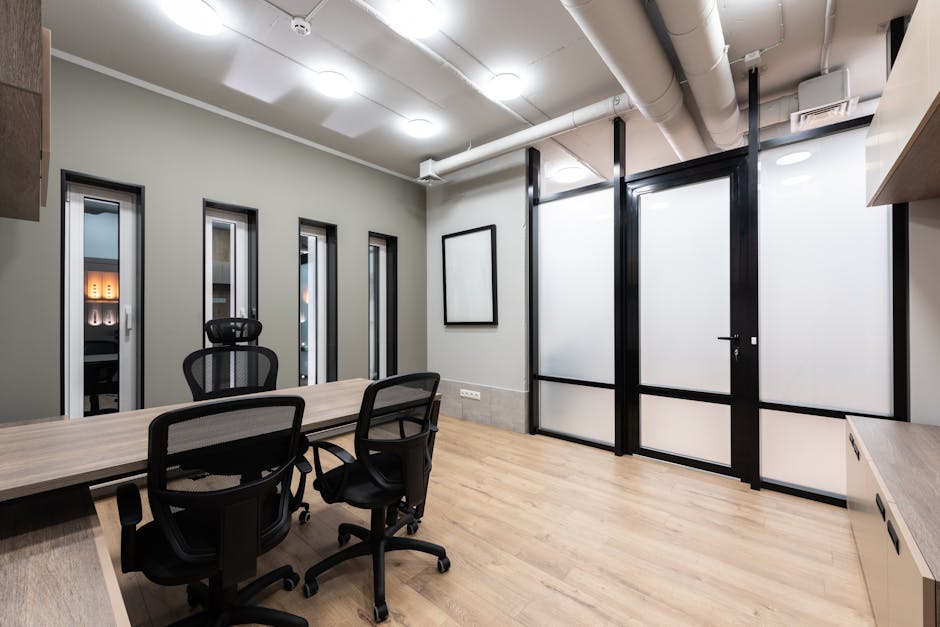Maximizing Office Space: 10 Signs You Need More Room for Productivity
“In today's dynamic work environment, efficient use of office space is crucial for productivity. This article explores 10 telltale signs that your workplace may be too cramped, affecting employee performance and satisfaction. Learn how to identify these issues and take steps towards creating a more spacious, flexible, and productive office environment. ”

The Importance of Adequate Office Space for Productivity
In the modern workplace, the relationship between physical space and productivity is more critical than ever. As businesses evolve and grow, the need for an office environment that fosters creativity, collaboration, and efficiency becomes paramount. However, many organizations overlook the subtle signs that they've outgrown their current space, leading to decreased productivity and employee satisfaction.

10 Signs Your Office Needs More Space
1. Lack of Flexibility in Office Layout
When rearranging furniture no longer solves your space issues, it's a clear indicator that you've outgrown your current office. A productive workspace should offer variety and choice, allowing for different types of work areas to suit various tasks and preferences.
2. Overreliance on Co-working Spaces
If your team frequently resorts to external co-working spaces for meetings or daily work, it's a sign that your office can't accommodate your current needs. While co-working spaces can be beneficial, excessive dependence on them may indicate insufficient space in your primary office.
3. Resource Conflicts
Constant overlaps in conference room bookings, perpetually occupied phone booths, or strained WiFi bandwidth are all red flags. These issues suggest that your office resources are stretched thin, impacting productivity and causing frustration among employees.
4. Uneven Distribution of Natural Elements
When employees are forced to work in areas devoid of natural light or greenery, it's not just a space issue – it's a wellbeing concern. Biophilic design elements are crucial for employee health and productivity, and their absence can be detrimental.
5. Increased Remote Work Preferences
If more employees are opting to work from home or local cafes, it might be because the office environment is no longer conducive to productive work. This trend can signify discomfort or dissatisfaction with the current office space.

6. Reluctance to Host Client Meetings On-site
When team members consistently take client meetings off-site, it could indicate embarrassment or concern about the office's appearance or functionality. This behavior might stem from a lack of appropriate meeting spaces or overall office aesthetics.
7. Territorial Behavior Among Employees
"Hoarding," "anchoring," or "settling" behaviors, as identified by Herman Miller's research, are unhealthy signs of a workplace ill-suited for its occupants. These behaviors often emerge when space and resources are scarce, leading to decreased collaboration and increased tension.
8. High Utilization Rates
If your office space and meeting room utilization consistently exceeds 60%, it's a quantitative indicator that you're short on space. Optimal utilization should fall between 40-60% to allow for flexibility and avoid scheduling conflicts.
9. Mismatched Meeting Spaces
When employees regularly hold small meetings in large conference rooms or struggle to find appropriate spaces for specific activities, it suggests that your current room distribution doesn't align with your organization's needs.
10. Declining Employee Satisfaction Scores
Regular employee satisfaction surveys are crucial for gauging workplace experience. If scores related to the physical workspace are trending downward, it's a clear sign that your office space is no longer meeting employee needs.
Taking Action: Solutions for Space Constraints
Recognizing these signs is the first step towards improving your workplace environment. Here are some actionable steps to address space constraints:
-
Conduct a thorough space utilization analysis: Use workplace management tools to gather data on how your current space is being used.
-
Implement flexible seating arrangements: Consider hot-desking or activity-based working to maximize space efficiency.
-
Redesign for multi-functionality: Create spaces that can serve multiple purposes throughout the day.
-
Invest in the right technology: Use scheduling software to optimize room usage and avoid conflicts.
-
Consider expansion or relocation: If the above strategies don't suffice, it may be time to look for a larger office space.

Conclusion: Embracing Change for Productivity
Recognizing the need for more office space is crucial for maintaining productivity and employee satisfaction. By paying attention to these signs and taking proactive measures, organizations can create a workplace that not only accommodates their current needs but also supports future growth and success.
Remember, the goal is not just to have more space, but to create an environment that enhances workplace efficiency and supports your team's evolving needs. Whether it's through better space utilization, redesign, or relocation, the key is to provide a workspace that empowers your employees to perform at their best.